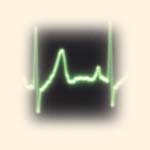Awareness of Heart Attack Signs Lags in U.S.
But most people surveyed know to call 911 when one happens, CDC says.
By Ed Edelson
HealthDay Reporter
|
E-mail this article
Subscribe to news
Printer friendly version
|

(SOURCES: Jing Fang, M.D., epidemiologist, U.S. Centers for Disease Control and Prevention, Atlanta; Martha Daviglus, M.D., Ph.D., professor of preventive medicine and medicine, Northwestern University, Chicago; Feb. 22, 2008, CDC's Morbidity and Mortality Weekly Report)
THURSDAY, Feb. 21 (HealthDay News) -- Too many Americans are not aware of all the warning signs of a heart attack, and the percentage who know what to do when one is suspected is not as high as it could be, a survey by the U.S. Centers for Disease Control and Prevention finds.
The survey results, released Thursday in the CDC's Morbidity and Mortality Weekly Report, are part of an ongoing effort to reduce deaths from heart attacks. More than 900,000 Americans have heart attacks each year, and there are more than 150,000 deaths, about half of which occur within one hour of symptom onset, the CDC said, so awareness and quick action are vital.
And yet, according to a statement by Dr. Jing Fang, a CDC epidemiologist and the study's lead author, "It is clear that the overall public awareness of heart attack signs and the importance of calling for emergency medical assistance quickly in the event someone is experiencing a heart attack or stroke was alarmingly low."
The state-by-state differences are important, she added in an interview. "We see marked disparities between states, and those states that have lower awareness should be more aggressive," Fang said.
The survey used data from the 2005 Behavioral Risk Factor Surveillance System involving 71,994 Americans in the District of Columbia and 13 states. They had been asked about their awareness of the five warning signs of heart attack: pain or discomfort in the jaw, neck or back; feeling weak, lightheaded or faint; chest pain or discomfort; pain or discomfort in the arms or shoulder; and shortness of breath. They were also asked what they would do if such symptoms occurred.
Overall, a large majority of people knew the right answer to that last question: Call 911 to get emergency help, rather than calling a doctor or going to a hospital. The proportion of people who said they would call 911 ranged from 77 percent in the District of Columbia to 78 percent in Mississippi to 89 percent in Minnesota.
Knowledge about the warning signs was much less satisfactory. Only 31 percent of those questioned knew all five signs. For example, awareness that feeling weak, lightheaded or faint was a warning sign varied from 53 percent in the District of Columbia to 70 percent in Iowa; for pain or discomfort in the jaw, neck or back, awareness ranged from 34 percent in the District of Columbia to 59 percent in West Virginia.
There were also sharp socioeconomic and ethnic differences. While more than a third of those with a college education knew all five signs and the need to call 911, only 15.7 percent of those with less than a high school education did. Awareness was significantly higher among whites (30.2 percent) than among blacks (16.2 percent) and Hispanics (14.3 percent).
"It is such a low percentage," said Dr. Martha Daviglus, a spokeswoman for the American Heart Association and a professor of preventive medicine and medicine at Northwestern University. "Maybe it is because they are unaware or misinformed. Or maybe it has to do with going to the emergency room of a hospital, thinking, 'We don't have any money, we'll have to pay something'."
The goal of the U.S. government and the heart association is to increase awareness of heart attack signs to 50 percent of the American population, Daviglus noted. "Maybe you think that is not much," she said. "Eventually, it should be our goal to reach the entire population. We can do it little by little. But it is only through the help of the public that we will achieve it."
One barrier is an unwillingness of many people to learn about heart attack signs, Daviglus said. "People believe this is never going to happen to them," she said. "They believe it is a problem for someone else."
More information
Warning signs of a heart attack or stroke and what to do about them are described by the American Heart Association. 
Copyright © 2008 ScoutNews, LLC. All rights reserved. 
HealthDayNews articles are derived from various sources and do not reflect federal policy. healthfinder.gov does not endorse opinions, products, or services that may appear in news stories. For more information on health topics in the news, visit the healthfinder.gov health library.